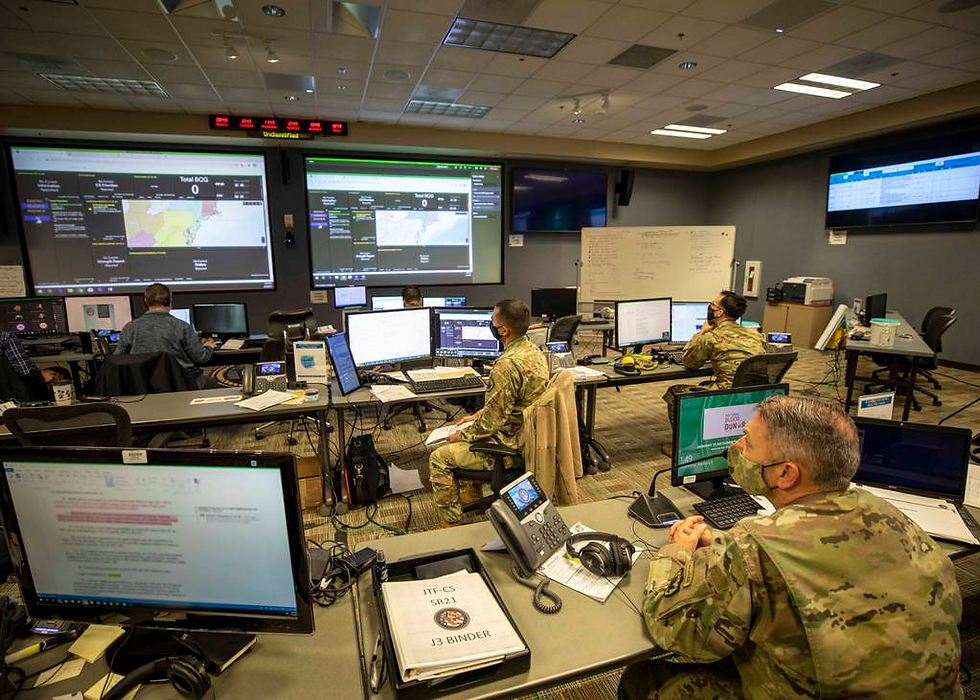Navy BD Part 13: Unmanned Fleet
- Giesler LLC
- Nov 27, 2023
- 3 min read
Updated: Jan 8, 2024
The United States Navy has been working on developing its unmanned fleet, encompassing unmanned surface vehicles (USVs) and unmanned underwater vehicles (UUVs), meaning the physical removal or remote location of the human from the platform.
There are several types of unmanned vehicles that vary in the level of human dependence and autonomy.
Remote operated – Ex: Remote piloting an Unmanned Aircraft System
Human supervised – Ex: Operations Center Monitors LBS Glider
Human-Machine teaming – Ex: MQ-25 and UCAS Automatous Carrier Landing
Near-Independent autonomy – Ex: USV Executing independent mission in set operating box
The Department of the Navy has outlined its initiatives for an unmanned fleet in the Department of the Navy’s Unmanned Campaign Framework, published in March of 2021.

The document is outlined in 3 parts:
Part I: The Mission – Why unmanned?
Part II: Unmanned Portfolio – Where are we now?
Part III: Delivering the Future – How will we get there?
Part 1: The Mission – Why unmanned?
One of the main priorities of the National Defense Strategy is to focus on how to combat long-term, strategic competition by Russia and China. One way to do so is for the Navy to increase its capabilities with unmanned systems. Unmanned systems:
Provide additional warfighting capability
Can take on greater operational risk while maintaining a tactical and strategic advantage
Increase lethality, capacity, survivability, tempo, deterrence, and operational readiness

To do so, the Unmanned Campaign Framework outlines the goals and Campaign Plan of Action and Milestones (POA&M), focused around 8 functional areas that are aligned to the National Defense Strategy:
Platforms and Enablers
Strategy, Concepts, & Analysis
Fleet Capability, Capacity, Readiness, & Wholeness
RDT&E/Science & Technology
People, Education, & Talent
Logistics and Infrastructure
Policy, Law, & Ethics
Communications & Messaging
Part 2: Unmanned Portfolio – Where are we now?
The Navy and Marine Corps unmanned aircraft systems (UAS) already have a variety of technologies to support unmanned maritime operations.
For example, the Broad Area Maritime Surveillance Demonstrator (BAMS-D) is a High-Altitude Long Endurance (HALE) UAS equipped with a maritime Intelligence, Surveillance, Reconnaissance, and Targeting (ISR&T) sensor package. This has been used for over 10 years, providing more than 35,00 hours of critical overwatch.
The Navy’s MQ-4C Triton and USMC’s MQ-9A are both executing Early Operational Capability (EOC) deployments. Additionally, the MQ-25A Stingray is in development to be the first carrier-based UAS.
Additionally, In September 2023, the unmanned surface vessels Ranger and Mariner became the first Navy USVs to visit Japan, taking part in the Integrated Battle Problem 23.2 exercise, aiming to test and advance capabilities for medium and large USVs in the Indo-Pacific.

The Navy and Marine Corps continue to utilize numerous smaller UAS and medium and large USVs across naval operations, with many are assigned to Unmanned Surface Vessel Division 1 or under Program Executive Office Unmanned and Small Combatants.
Part III: Delivering the Future – How will we get there?
The goal of the unmanned fleet is to balance connectivity, scaling, core technologies, force integration, and addressing platform challenges in order to drive lasting change in a capability-centric approach. This means capabilities are delivered and updated through a modular and open system environment.

An example of this approach can be seen in a recent Naval Sea Systems Command Sources Sought posted November 3, 2023 for large unmanned surface vessels (LUSV) as well as the Navy’s request of $117.4 million in advanced technology development funding for the LUSV program in fiscal year 2024.
According the Congressional Research Service, the Navy envisions LUSVs as being 200 to 300 feet in length and having full load displacements of 1,000-2,000 tons. They should be low-cost, high-endurance, reconfigurable ships with ample capacity for carrying various modular payloads, including anti-ship and land-attack missiles.
The Navy plans to operate a fleet of crewed and unmanned platforms within the next 10 years focusing on more distance, deception, defense, distribution, delivery, and decision advantage to continue to build a more lethal force.
Sources:




Comments